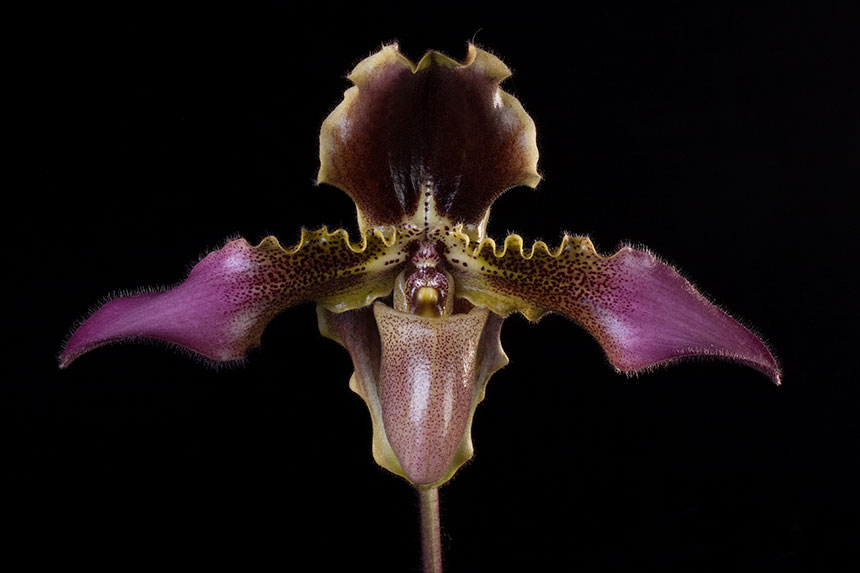PAPHIOPEDILUM Orchid
Pronounced: paff-ee-oh-PED-ih-lum
Photo Credits: Judith E Higham ( Vancouver Orchid Society/Pacific Northwest Judging Centre)

Pronounced: paff-ee-oh-PED-ih-lum
Photo Credits: Judith E Higham ( Vancouver Orchid Society/Pacific Northwest Judging Centre)
These Asian relatives of our native lady slippers come in an almost infinite variety of shapes, sizes and colors, and include those that are very easy to grow and bloom and others that are much more difficult. Fans of green, or mottled leaves give rise to flower stems carrying one or more flowers in colors of white, green, yellow, earth tones, pink, red and black.